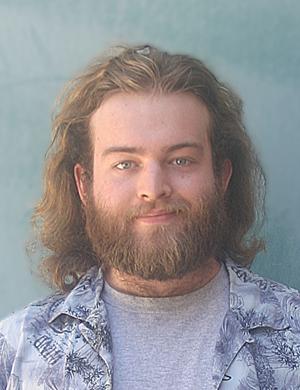3-D Printing Could be the ‘Next Generation’
Not that long ago, printing physical objects was considered science fiction — a faraway dream.
Consider the 1960s TV show “Star Trek” where the crew of the SS Enterprise used a machine called the replicator, which could theoretically produce anything, literally, from physical objects to medicine or food.
The “replicator” theoretically existed in the 24th century. But today, anything from works of art to spare car parts to medical equipment can be printed cheaply and with little to no skill from the comfort of one’s own home.
On Saturday, Sept. 12, the “3-D Printshow” set up shop at the Pasadena Conference Center to showcase various 3-D printing companies and what they have to offer.
Some focused on design, some on industrial manufacturing, and some on medical equipment.
The list goes on and as more technologically-apt minds continue to experiment and invent, it becomes apparent that no avenue will be left unexplored when it comes to the potential applications for this technology.
Raise3D is a company that manufactures 3-D printers as well as the software needed to create with the printer.
When it comes to manufacturing product parts, 3-D printers may eventually overtake machining and other methods as the most efficient way to produce these items.
Edward Feng of Raise3D said, “As far as manufacturing goes, on a small scale, it is actually cheaper to use 3-D printing. But (the technology) is developing so fast that who knows where it will be a few years down the line.”
As of now, smaller objects can take anywhere from two to six hours to print, with larger objects taking far longer.
The level of detail must also be taken into consideration when predicting print time. It is clear among the 3-D printing community that the potential for this technology and the fulfillment of that potential are growing exponentially.
One booth at the event was showcasing a yet-to-be FDA approved CPAP mask. These are respiratory masks which are often prescribed to people who suffer from obstructive sleep apnea.
The company, Metamason, has developed an algorithm which scans an individual’s head, provides an accurate digital representation of his or her facial topography, and then, using a 3-D printer, constructs a respiratory mask ergonomically designed to fit on that individual’s face.
Charles Bohlen of Metamason said, “Mass produced CPAP masks only come in three sizes: small, medium and large. A lot of the time, people find these masks extremely uncomfortable, and also don’t wear them tight enough.
There’s about a 50 percent quit rate with the masks, leading people to seek out other forms of treatment like surgery, which can be risky.”
Bohlen also revealed that 3-D printing is already affecting our daily lives on a large scale, and most, understandably, have not noticed.
“A huge percentage of hearing aids are 3-D printed and Invisiline braces are probably the most successful,” he said.
As amazing as some of the practical applications of this technology are, there is a growing shadow of concern developing alongside the 3-D printing industry.
Everyone was excited to explain their usage of this technology and the incredible things they were doing with it, but when asked about potential misuse, they all appeared stumped.
“I don’t know. There [are] no regulations,” said Vivian Chu of Tinkerine, a 3-D printing company with a strong focus on education. “Once you have a printer, no one can control what you make with it, like guns.”
People already find it frightening to think we may soon be living in a reality in which anyone is able to download and print out a firearm, or other weapons and dangerous items or materials for that matter.
In his article “The Next Big Gun Debate: 3-D Printed Firearms,” published by The National Interest, Dr. Damien Van Puyvelde, associate director for research at the National Security Studies Institute at the University of Texas at El Paso, said, “The advent of 3-D printed firearms is shattering the foundations of government gun control — the dissemination of printed guns will force public institutions and citizens to adapt, whether they like it or not … The ability to print guns at home, based on blueprints that are available online and the use of increasingly affordable and reliable 3-D printers, directly challenges this state of affairs.”
To experts and college students alike, rules, regulations and guidelines struggle to keep up with this progressing technology.
It is clear that a balance must be established with 3-D printing to prevent misuse while extrapolating the achievements.
The benefits are truly magnificent, however, and it is difficult to argue with such affordable manufacturing costs, the ease and efficiency of such technology, and limits put in place and only breakable by the human imagination.

Aidan was heavily influenced by his parents, one a retired criminal defense attorney and the other a Pulitzer Prize winning journalist. As he grew older,...

Ekaterina Nikitina was born and raised in St. Petersburg, Russia. She moved to the US in 2011. She is earning her degree in Public Relations. She likes...

